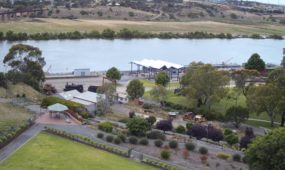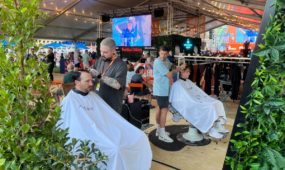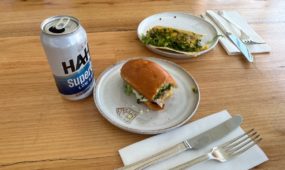Desert garden's blooming success
Tourism
A TRIP to a botanic garden often conjures up images of blooming roses, neat hedges and lush leafy flora specimens.

Sign up to receive notifications about new stories in this category.
Thank you for subscribing to story notifications.
Port Augusta is about 300km north of Adelaide, the capital of South Australia.
It sits at the top of Spencer Gulf and is known as the gateway to the Outback in central Australia - and for its scorching summer heat.
Remote Australia might seem barren and lifeless at first glance but the Australian Arid Lands Botanic Garden is proof the continent’s heart is home to thousands of highly evolved plants specially adapted to thrive in an environment of extreme temperatures and devastating droughts.
The 250ha garden opened in 1993 and is operated by Port Augusta Council staff and a dedicated group of 30 volunteers.
About 90,000 visitors have entered the garden in 2015, easily eclipsing the previous record of 70,000, which was set in 2013.
Gerlachmetres
She said plants in the garden had been selected from areas with less than 250mm (10 inches) of annual rainfall in South Australia, Western Australia, New South Wales and Victoria.
“It showcases the best of Australia’s arid lands plants, there’s a huge range and people are absolutely surprised at how stunning they are in their home environments,” she said.
“To have all those plants in the one collection is quite rare.”
Gerlach said the park was also home to many reptile species including large goannas and the odd snake. She said arid land bird species in the garden had increased from about 40 to more than 150 since it opened.
“We are really becoming a destination for bird watchers too … it’s a growing market,” she said.
The free admission garden, which recently won an ecotourism award, is divided into sections to represent various arid Australian landscapes such as the Flinders Ranges and Great Victorian Desert or to showcase rare plants.
Gerlach said it was a great place for people to get a taste of central Australian flora and fauna without heading deep into the outback, particularly for the growing number of international visitors.
She said Sturt’s desert pea – the floral emblem of South Australia – was a drawcard for visitors who wanted to see it growing in its native habitat.
“People often expect the plants in arid areas to be quite spindly and not as beautiful as plants in other areas but when you see them so close in the garden you really can appreciate how stunning they are, the variety of colours, the leaf shapes and the overall beauty of the plants.”
“Quite often people who haven’t been before or heard much about it, once they get there they really are stunned to see what we have to offer … then when they get to see a goanna or a lizard of some type they love that too.”
Other popular ecotourism activities in South Australia include swimming with wild dolphins and sea lions on Eyre Peninsula, caving on the Limestone Coast,Canoeing down the Murray River and trekking the ancient landscapes of the Flinders Ranges.
Key Contacts:
Jump to next article



